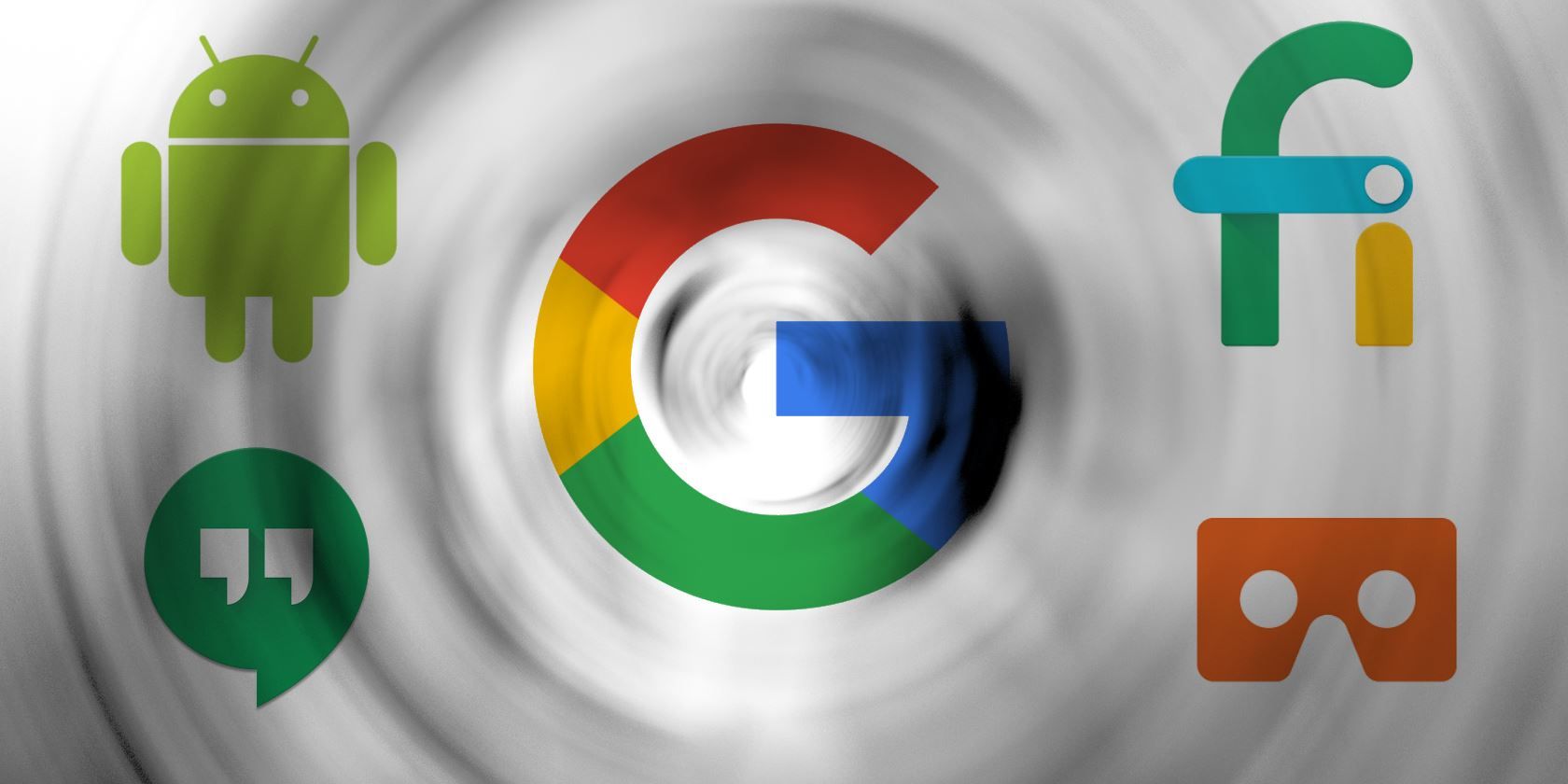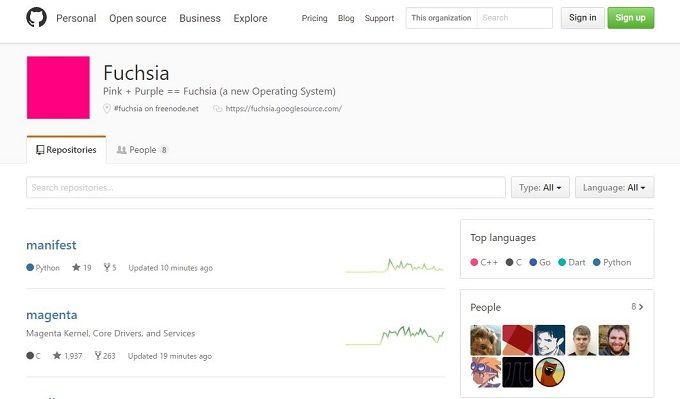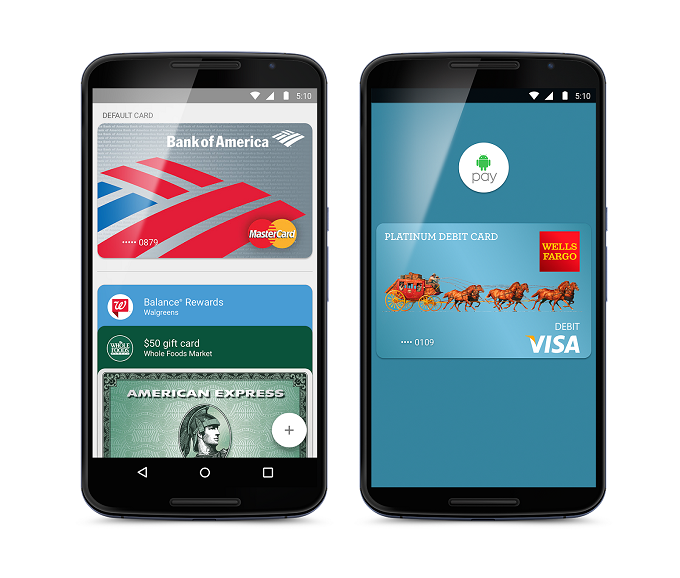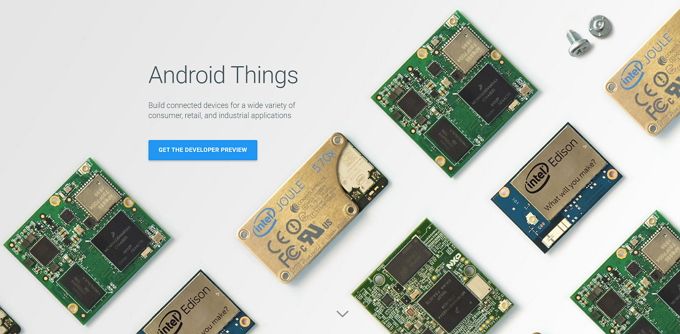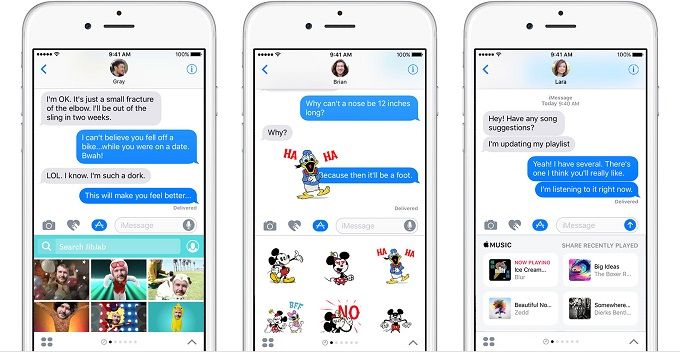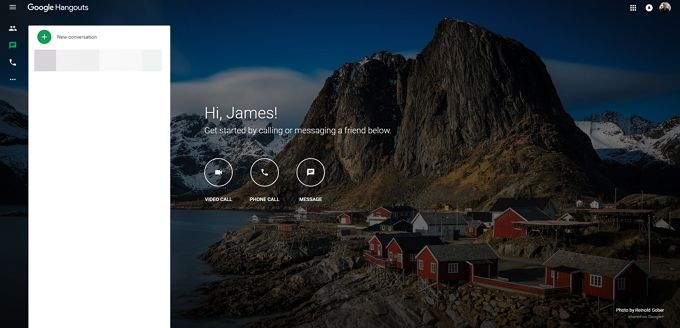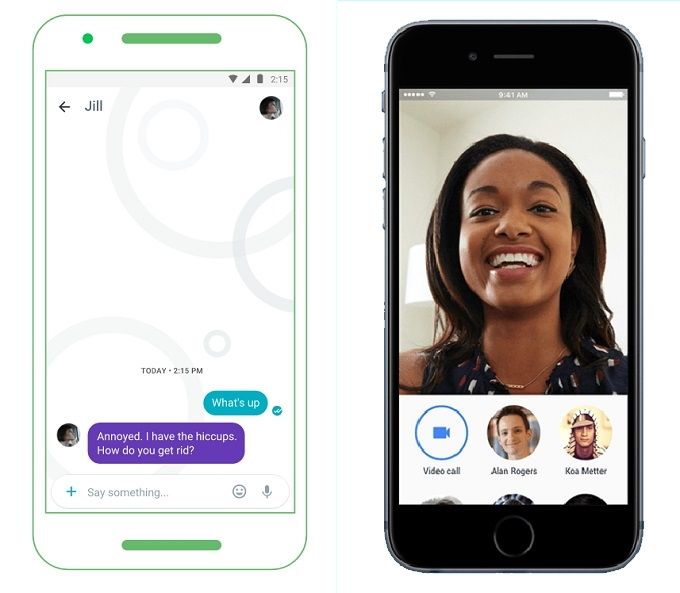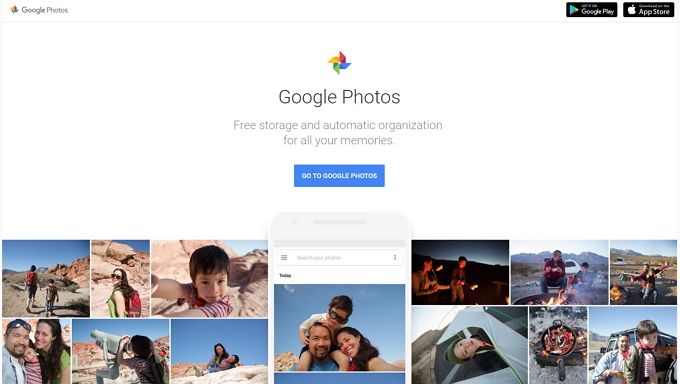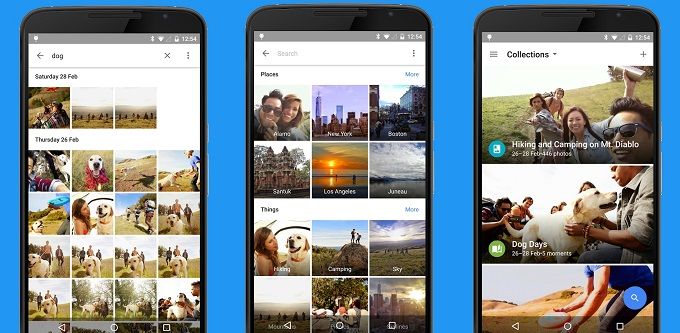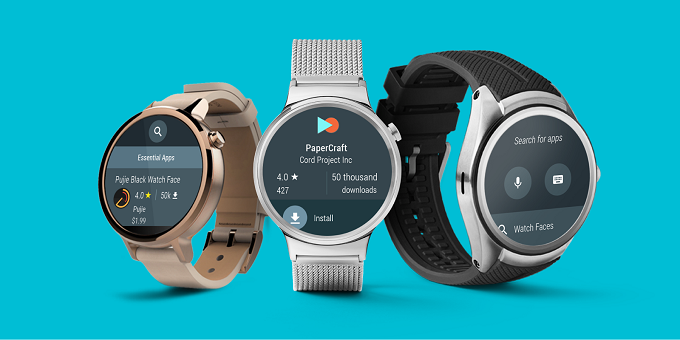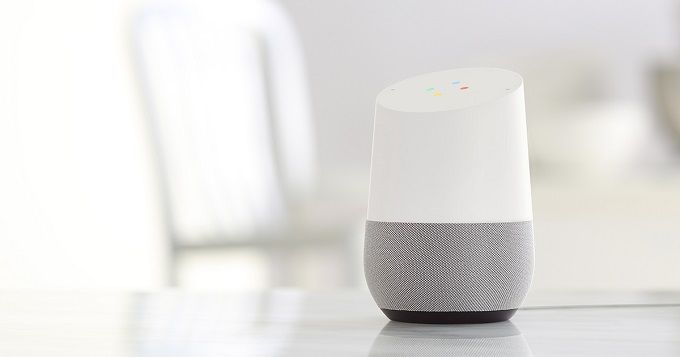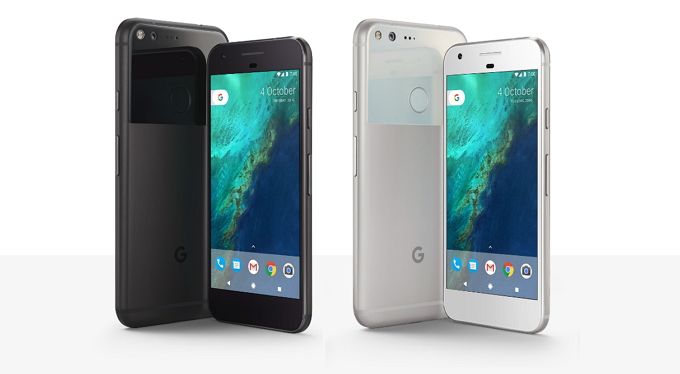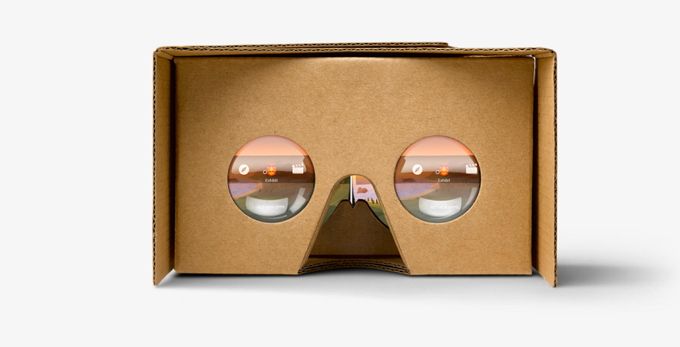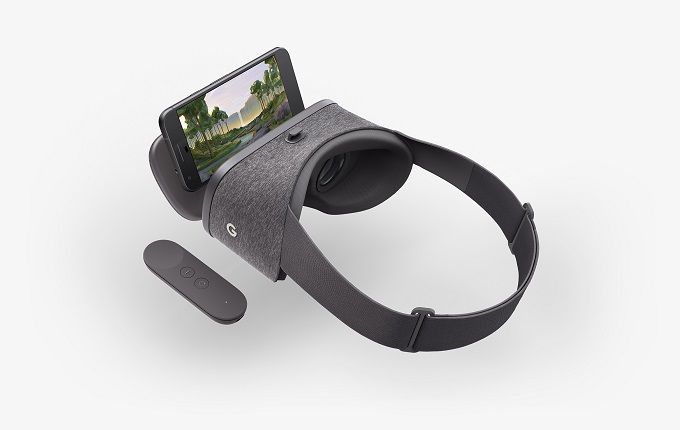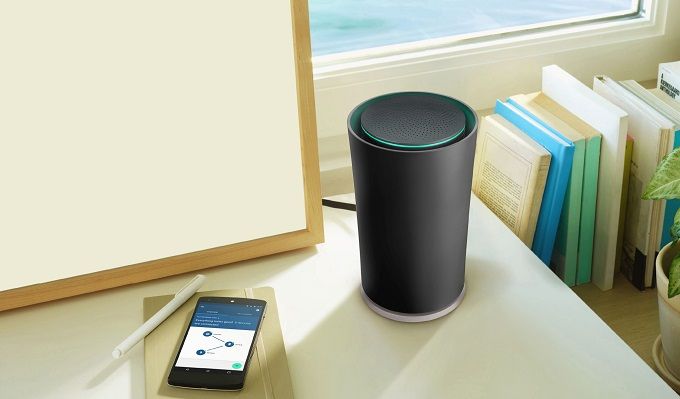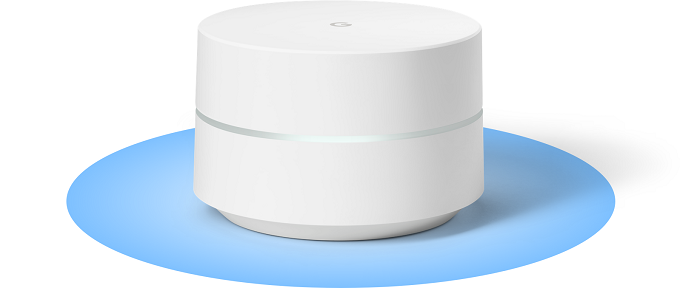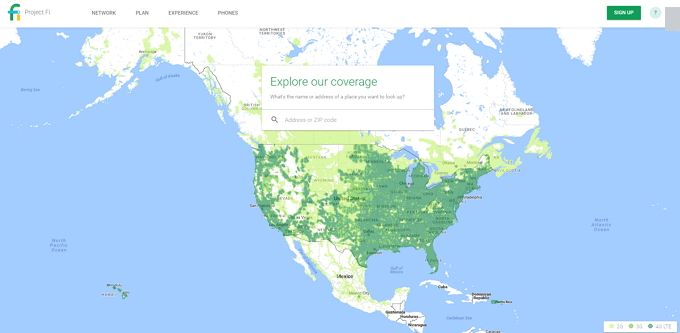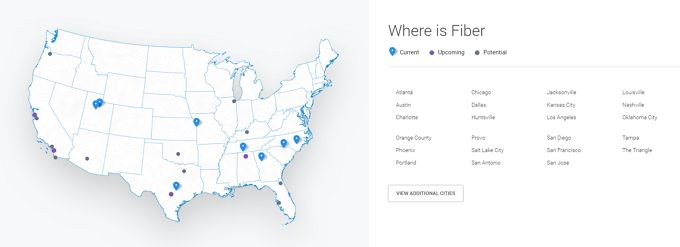Google has come a long way since its humble beginnings as a web search engine. Not only has Google dominated the internet search market and its name become a verb, but Google also has a vast array of other products, services, and projects worth using.
Unfortunately, they're pretty bad at communicating what those works are.
Following the creation of Alphabet in 2015, Google separated from some of their more outlandish projects and have turned their focus towards more consumer projects, many of which are exciting and starting to bear fruit -- the kinds of projects that you may want to start using yourself!
Jump to a section: Google Software | Google Hardware | Google Services
Google's Software Projects
Android, Chrome OS, and Fuchsia
Google currently maintains two operating systems: the smartphone platform Android and the laptop platform Chrome OS (which runs on Google's affordable Chromebook laptops).
Since 86 percent of smartphones worldwide run Google's mobile OS, there's a good chance that you already own an Android device. Although its main base is open source, Google puts a lot of development into Android to make it the polished end product it is. This is similar to their development of the open source web browser Chromium, released by Google as Chrome.
Chrome OS is similar to the Chrome web browser but with additional offline features. By running such a minimal OS, Chromebooks get great battery life and are usually priced far under most Windows laptops. Chromebooks have been well received largely because most users now syncs multiple on-the-go devices with cloud-based services. When everything runs on the internet, it seems unnecessary to run a full-blown operating system anymore.
There have been rumors of Google wanting to merge their two OSes, bringing a "best of both worlds" approach to mobile computing. To mark the start of this transition, in 2016 they revealed a project that would allow Android apps to run natively on Chrome OS. The beta build was rolled out to select Chromebooks and is currently scheduled for full release in late 2017. Google even recently confirmed that every Chromebook released in 2017 will support Android apps.
Parallel to this whole idea of bringing Chrome OS and Android together is an entirely new project called Fuchsia. The project was "announced" when the development team made the code available on Github. Currently there is very little information on what Fuchsia will actually be for.
What we do know is that it is not based on Linux -- as Android and Chrome OS are -- which makes it a radical departure for the company. It also appears to be designed to run on lightweight, minimal hardware specifications, suggesting that it could be used for IoT products. However, as Android Things is also in development (more on that below), it isn't clear what the overlap would be here.
Android Pay
At I/O 2015 Google announced the launch of their mobile contactless payment service Android Pay. The seeds of the service were planted in 2011 when the company launched its online payment predecessor Google Wallet. With Android Pay, they have brought contactless payments into the mobile age.
Contactless is meant to simplify payments, making it quicker, easier, and more secure for you to pay at the checkout. Android Pay takes this idea and applies it to your smartphone. Android phones have supported Near Field Communication (NFC) for some time, and the contactless payment systems found in your favorite shopping destinations also use NFC to accept contactless payments.
Setting up Android Pay is as simple as downloading the app on an NFC-enabled Android phone and adding a credit or debit card from a supported bank. Using the Android Pay app, you can also keep track of all your spending and manage your loyalty cards. As an incentive to use the service, Google has been known to add chances to win prizes just by making payments with Android Pay, as they did in the U.K. across Christmas 2016.
Android Things
The Internet of Things is a movement to add internet connectivity to almost everything in your home. It is a growing market with devices ranging from fitness trackers all the way to internet-connected Lego cities. But all of these products need an operating system in order to interact on the cloud.
Google's attempt to create an IoT OS dates back to Project Brillo, unveiled at I/O 2015. Brillo had a name change and relaunched in December 2016 as Android Things. Along with this relaunch came the first developer preview of the stripped down Android OS.
Modifying the Android OS to fit other devices is nothing new for Google, as they have played this game before with Android Auto and Android TV. However, with millions of IoT devices expected to enter homes over the coming years, the battle for IoT OS is only just beginning. Although Android Things is still in early-stage development, Android has a large developer community so expect to see some early demos and prototypes in the near future.
DeepDream
Machine learning has become quite a buzzword, being found in almost every type of software you can imagine these days. However, Google has been using machine learning since before it was cool to categorize photos by faces and features.
Machine learning neural networks try to replicate the way the brain works, and as a result are quite complicated. Just like the mind, they need information in order to learn. To train a neural network, you need to feed it training data -- for example, pictures of cats -- so it can learn to correctly identify cats.
However, the network can also run in reverse, adding features it has been trained to look for into images. This ends up creating some very psychedelic images that often resemble modern art more than photography. Google named this project DeepDream and open sourced the code, placing it on Github. From there, a number of developers have created websites and apps that allow you to create your own slightly terrifying artwork.
Gmail and Inbox
Google's web mail service, Gmail, is one of the largest email providers in the world. Given its prominence, it's a surprise to learn that it originally started life as a side project of a Google employee as part of the company's 20 Percent Innovation Time Off initiative.
Gmail became one of the leading email providers due to its speed, ease of use, and useful new features. It now has over one billion users and continues to grow as a result of the success of the Gmail Android app.
Majorly changing or updating the service could be a disaster for the company as they try to prevent breaking (or significantly altering) the email client and upsetting their users. Google's solution to this dilemma was to create the new email service Inbox. While Inbox uses the same back-end data as Gmail -- meaning that you can switch easily between the two services -- it aims to change the way you interact with email.
Most of us receive emails and either leave them in our inboxes until we deal with them or forget about them entirely. Inbox wants to help you turn your inbox until the ultimate to-do list. This point is emphasized when you are finished with an email you can now mark as "Done" rather than "Archive".
Inbox also brings a host of personal assistant style features, including reminders, the ability to snooze emails until another date or location, and even save links for later. Inbox also bundles together emails of similar types like Promotions or Updates for you to easily move through your email list in a quest for the elusive inbox-zero.
Currently there are no signs that Google plans to fold Gmail in with Inbox or even merge the features. There is always the possibility that they will run both services in parallel since they are both built on the same back-end. The alternative would be to test features in Inbox and potentially move them over to Gmail when they are deemed ready for prime time.
Google Assistant
In the age of Siri and Alexa, it looks as though voice-controlled personal assistants will play a large part in our lives. Of course, Google already has an assistant known as Google Assistant -- one that can access all of the information you store with Google to give you travel updates, personalized news stories, and other information just by saying "OK Google".
Google's voice search has also been widely regarded as powerful and accurate. However, up until very recently, there was no way to connect the personalization of Google Now with a voice control that could understand conversations.
Google Assistant brings together those two products, creating a smart personal assistant filled with information pulled from your Google data. The biggest step forward for Assistant is the use of natural language processing, which means you can have a normal conversation with Assistant rather than having to talk to it like a computer and issuing specific commands.
Google has also announced Actions on Google, which allows developers to add commands to Google Assistant. This can either be a direct command (like booking a specific flight) or ways to start up a contextual conversation. Google's aim is to let you talk to Assistant and do everything you want without having to install apps or authorize new services.
Assistant is currently limited to Google Home, the Google Pixel phones, as well as their messaging app Allo. However, you should expect to see it coming to more products in the near future, especially as Actions on Google allow developers to embed Assistant into other hardware.
Jibe
One of the most compelling services by Apple for iOS users is iMessage -- a service that supplements your regular SMS experience by adding extra features like video calling and group chats. If you ask an iOS user why they wouldn't move to Android, it will likely have something to do with iMessage.
Of course, as Apple's major competitor in the smartphone market, Google is keen to create an iMessage alternative for Android. However, Apple controls all aspects of the iOS experience, from the hardware down to which carriers can support iPhones. Android is far more fragmented with many varieties of phones running on multiple different networks, so how would an iMessage competitor work?
The answer lies in Rich Communication Services (RCS), a replacement to the rather tired SMS. RCS brings with it the ability to send files between devices, make video calls, send large photos, and even support group messaging.
Following their purchase of Jibe Mobile in 2015, Google launched the Jibe Platform as a way to implement RCS for Android. Google Jibe could cause a dramatic shift in the way we message on our smartphones, potentially rendering rivals (like WhatsApp) redundant.
Messaging (Hangouts/Allo/Duo)
Since Google launched their cross platform messaging app Hangouts, they've put a substantial amount of effort into its development adding voice and video calls and SMS support on Android. Until recently it was seen as Google's alternative to Skype, WhatsApp, and potentially iMessage. Its user base grew, helped in large part by it being pre-installed on the majority of Android phones and integrated with Google accounts.
That all changed when Google launched standalone messaging apps Allo and Duo for Android following I/O 2016. Hangouts has pivoted to a professional messaging service for businesses while the messaging app Allo and its video-calling companion Duo have become the company's consumer-facing messaging platforms.
Some might argue that spinning off Android's messaging to two separate apps, which need to be downloaded by all of your friends and family to be useful, was a poor decision. However, the performance of both apps is much improved over the often buggy performance of Hangouts.
Duo is a one-to-one video-calling app that allows you to chat with another who also has Duo. While the performance and stability of the app exceeds that of Hangouts, it is missing the ability to start a group call.
Allo is much like other popular messaging apps (e.g. WhatsApp and Telegram) where you can send and receive messages, videos, and audio from your contacts who also use the app. However, its biggest selling point is the integration of Google Assistant. You can message Assistant either in a standalone chat just for your own use or integrate it into your Allo chats by tagging @google.
Google Photos
If DeepDream is the trippy, experimental side of machine learning, then Google Photos is where it finds its purpose. Google Photos started off as a replacement for the stock Android Photos app but quickly morphed into full-blown photo management software. While the option is still there to just view the images that are on your phone, its main selling point is the storage and categorization of images.
You can upload your entire photo collection from your phone or computer to Google's servers for free (as long as you don't mind the resolution being limited to 16 MP). The whole collection is then viewable through the Photos app or website.
Machine learning and Google's search prowess combine to categorize your photos and make them searchable. The machine learning allows Photos to group together images of specific people, as well as by feature like beach or sunset.
Photos also houses an assistant, but this is an entirely different Assistant to the one on Google Home, Pixel, and Allo. The Photos assistant looks at your upload photos, then groups them together by location. It can also create collages and stylized photos which you can save to your library. It even has a Timehop-style feature where you can be notified of what you were doing in years past.
Google's Hardware Projects
Android Wear
While the now-defunct Pebble was among the first to bring wearables to the tech market, Android Wear was the first attempt from one of the industry's big players. Android Wear is a companion smartwatch to your Android or iOS phone and runs on a modified version of Android.
The watches, made by partners like LG, Motorola, and Samsung, all look stylistically different, with some featuring additional sensors, like heart rate monitors, but Google is very much in control of the OS.
The watches integrate with Google Now cards to provide personalized updates alongside your notifications and call alerts. As Android Wear devices pair via Bluetooth, they can also be used to store and playback music without the need to be connected to the controlling phone.
Just like the full-blown OS, Android Wear can run apps from the Play Store to add features to the watch. While smartwatches in general, including the Apple Watch, have largely failed to capture the imagination of the general public thus far, they have been embraced by one group: fitness enthusiasts. One of the places Android Wear excels is in fitness tracking, either using Google Fit or by downloading third-party Android Wear apps.
Google is currently in the process of preparing the delayed release of Android Wear 2.0. While there have been some small updates since the original release, 2.0 will bring a revamped Material Design UI, on-device Google Play Store for Android Wear apps, a built-in keyboard, and handwriting recognition. One of the most anticipated additions is cellular support to break the bond between phone and watch.
Google Home
Amazon's Echo smart home device practically created a new market for internet-connected devices. The ability to talk to your virtual personal assistant and have it respond to you and use the device's in-built speaker to play music was game changing. It was only natural that Google would want to build a competing device, which they did with Google Home.
Launched at I/O 2016 alongside Google Wifi, it marked Google's first major foray into hardware manufacturing. Google Home's design aesthetic is similar to that of Google Wifi and Google OnHub. It hopes to become a celebrated centerpiece of the home rather than an ugly piece of technology, and to highlight this, Google created customizable bases which can be changed at will.
Google Home has a built-in speaker which can be used for music playback from services including Google Play Music, YouTube Music, Spotify, TuneIn, Pandora, and iHeartRadio. The main attraction of Google Home though is its integration of Assistant.
Because of the implementation of natural language processing, you can have an actual conversation with Google Home, which gives it a major advantage over Amazon Echo. Taking a leaf out of Sonos' book, by placing multiple Google Homes around the house, you can even group them together to enjoy the same music in every room.
Pixel
Google has been producing phones since 2010 when they launched the first device in the Nexus line. These phones were aimed at developers as a showcase for what a stock Android experience could be like. In order to keep the cost of the devices down, they typically had mid-range hardware -- nothing that would be classed as flagship material. In actuality, Google never made these phones, instead choosing to work closely with the design teams at Samsung, Motorola, LG, and others.
Since Google turned its focus more towards the consumer market, it makes sense that they would try their hand at producing the first Google phone. The Pixel, alongside its larger sibling the Pixel XL, was launched in October 2016 as a direct iPhone competitor.
At first glance it's easy to see how Google has taken aim at the design of the iPhone with the Pixel's rounded edges, metallic body, and high-resolution screen. Google also decided to borrow the iPhone's premium pricing, retailing at $649 for the base model.
While it's expected for a modern flagship phone to have impressive hardware specs, which the Pixel does, it's the software that really sets it apart. The Pixel comes with an exclusive launcher that has Google Assistant built in at its core.
The Pixel and Pixel XL have only been out for a few months as of this writing, but reviews have been very positive overall. While the heavy price tag is hard to overcome, the Pixel is a shining example of what a fantastic OS Android can be.
Cardboard and Daydream (Virtual Reality)
Google Cardboard is a virtual reality (VR) platform for smartphones that can be experienced using a foldable cardboard headset that you place your phone into. Google published the designs for the headsets, allowing other companies to customize and manufacture their own versions, for a price typically below $30.
Alongside the headset, Google also developed a software development kit (SDK) for creating VR games and apps compatible with Cardboard. Initially Cardboard only supported Android, but it has since expanded to include iOS. The low cost coupled with wide-ranging accessibility means that Cardboard, which was originally a "20 percent project", is now a huge hit.
Building on Cardboard's success, Google launched the Daydream VR platform at I/O 2016. Daydream is built directly into Android 7.1 allowing for a more immersive and seamless experience. Instead of having to open a VR app from your phone as with Cardboard, the new Daydream view is a virtual reality world which houses all the new VR experiences built for Daydream.
The software isn't the only upgrade for Daydream -- the headset got a makeover too. A new premium headset was developed, created from a lightweight cloth to make it more comfortable to wear. New capacitive buttons replaced the manual push button of the Cardboard headset, and an NFC chip simplified the connection process.
Google also opted to add controllers to Daydream, meaning that you can interact with the virtual world by either clicking or waiving the controller bringing Google's VR platform in line with competitors like Samsung's Gear VR.
Google Wifi and OnHub
It's common knowledge that many home routers are unreliable or just flat-out don't work. Poor connection and Wi-Fi dead zones have plagued us all for many years, so in a lot of ways routers have stayed firmly planted circa 2007. The hardware has gotten better, but for most routers the software and management have stagnated.
Google decided that this was a problem worth tackling and launched the OnHub, a modern take on the humble router. Its elegant design immediately made it stand out, edging itself closer to decorative homeware than routers of the past.
Wireless coverage was improved too by rethinking the positioning of the Wi-Fi antennas. There was even an app to manage the OnHub, replacing the often clunky web interfaces of most routers.
And at I/O 2016, they proudly announced Google Wifi. This move initially stung owners of the OnHub who were still waiting on promised feature-adding upgrades. However, instead of replacing it, Google Wifi lives within the same ecosystem as the OnHub.
Where the OnHub is designed as a single router for your home, Google Wifi is a smaller unit designed to be placed across the home to create a mesh network with other Google Wifi units. The mesh network improves coverage, even in those hard-to-reach spots.
Google's Service Projects
Project Fi
Since Google provides the OS that powers the majority of smartphones around the world, it was only a matter of time before they made the jump to mobile carrier to complete the package.
Project Fi, launched in 2015, is a virtual mobile network operated by Google. The service currently only operates within the United States, although there are partners that enable roaming in up to 135 different countries at the same domestic prices.
Project Fi runs on the infrastructure of four different operators: Sprint, T-Mobile, US Cellular, and Three. This lends itself to Project Fi's main advantage over a traditional carrier, which is the ability to switch between 4G networks depending on signal strength and speed.
Consider what happens when you're on a Wi-Fi call but get disconnected: Fi seamlessly merges your call onto its cellular network. Currently only Google's Pixel, Nexus 5X, and Nexus 6P phones are set up to work with Project Fi as they were specifically designed with a mobile radio to support network switching.
Despite being a virtual network, you can move your current cell number over to your new Project Fi plan. Another benefit of Fi is that there is no annual commitment. Gone are the 24-month contracts and in its place comes a rolling monthly contract.
For just $20/month on Fi Basic, you receive unlimited domestic talk and text, unlimited international texts, Wi-Fi tethering to use your phone as a hotspot, and access cellular coverage in 135+ countries and destinations. Read more about our own experience using Project Fi.
Fiber
The United States is geographically huge and serviced by only a few telecom companies capable of high-speed fiber broadband internet. And since Google's entire business is online, it's in their best interest to get as many people connected to the internet as possible.
Google decided to overcome this issue by becoming a broadband provider. In 2010 Google began what was seen at the time as an experiment to bring fiber broadband and cable television to Kansas. After it proved to be a resounding success, Google turned this experimental venture into a legitimate business.
Google Fiber is now available in various areas around the U.S. with more currently in development. If you live in a Fiber area, then you can get up to 1,000 Mb/s broadband speeds. The Fiber service also carries your cable television service, which includes more than 220 channels.
Included in your cable package is a home DVR capable of recording up to eight HD shows simultaneously. You can even access your recordings on the go with Google's Fiber app. As this is Google, they also equip your Fiber cable with Smart Search. This lets you search your TV listings, and even filter by actor.
If all those feature weren't enough to tip you in Fiber's favor, then perhaps the complementary 1 TB of Google Drive storage will. Or what about the unlimited local and nationwide calling from your Fiber home phone? It's hard to deny Google Fiber as a compelling service.
What's on the Horizon for Google?
This list only scratched the surface of what Google is working on. Alongside some other consumer projects, Google is putting a lot of effort into development tools and cloud services.
And that's not to mention the projects of Google's now-parent company Alphabet! All things considered, 2017 could be a very exciting year for the Mountain View tech giant -- and for you, depending on how many of these projects you start using yourself.
Image Credit: small smiles via Shutterstock.com

